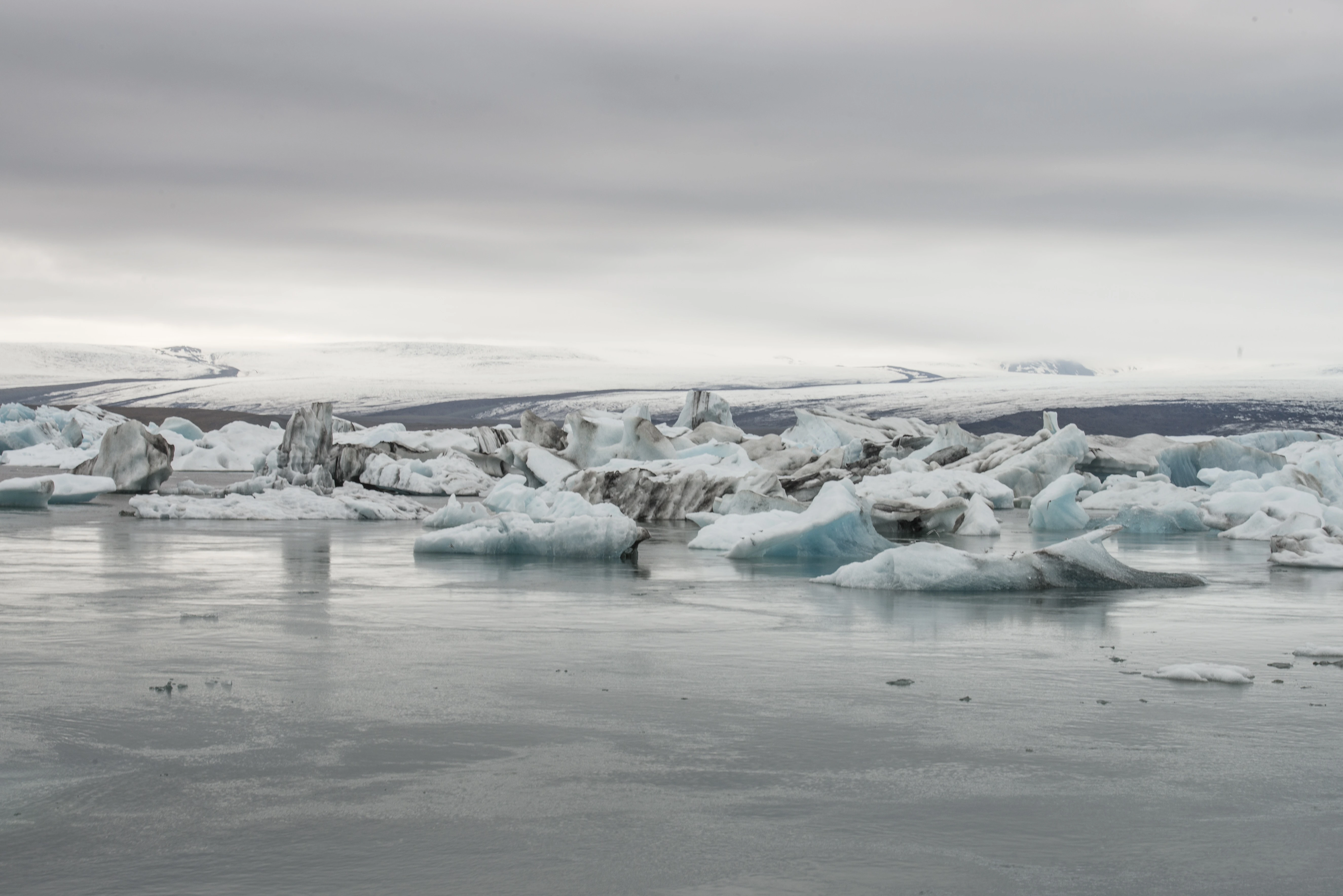




Vatnajokull Glacier
Vatnajökull is the largest glacier in Iceland and one of the biggest in Europe. It covers about 8% of Iceland's total land area. This massive ice cap sits in the southeastern part of the country and measures around 8,100 square kilometers. The glacier is incredibly thick in some areas, reaching depths of up to 1,000 meters. Vatnajökull is not just a simple block of ice; it has many outlets or smaller glaciers flowing from it. These outlet glaciers create striking landscapes with dramatic icefalls and crevasses. Beneath Vatnajökull lie several active volcanoes, including Grímsvötn and Bárðarbunga. This unique combination of ice and volcanic activity can lead to fascinating natural events, such as glacial floods called "jökulhlaups." The glacier is part of Vatnajökull National Park, which offers stunning views and opportunities for activities like hiking, ice climbing, and guided glacier tours. The park also features diverse landscapes beyond the glacier itself, including mountains, volcanic craters, hot springs, and lush valleys. Vatnajökull's immense size and beauty make it an iconic symbol of Iceland's natural wonders.
The Area
Top ways to experience
Vatnajokull Glacier
What other travelers are saying about
Vatnajokull Glacier
Beautiful glacier. You can do a lot of hiking around the glaciers if you have the time.
Nearby attractions to see
Frequently asked questions
What is Vatnajökull Glacier?
Vatnajökull Glacier is the largest ice cap in Europe by volume and area, located in southeastern Iceland. It covers over 8% of the country and encompasses numerous active volcanoes beneath its ice.
How thick is the ice on Vatnajökull Glacier?
The thickness of the ice on Vatnajökull Glacier can reach up to 1,000 meters (3,281 feet) in some areas, making it one of the most massive glaciers in Europe.
Can visitors explore Vatnajökull Glacier?
Yes, visitors can explore Vatnajökull Glacier through guided tours. These tours offer activities such as glacier hiking, ice climbing, and exploring ice caves, providing a unique way to experience the glacier's stunning landscapes.
What unique features can be found at Vatnajökull National Park?
Vatnajökull National Park offers a variety of natural wonders including volcanic landscapes, geothermal areas, and diverse wildlife. It's also home to Jökulsárlón, a glacial lagoon filled with floating icebergs that is one of Iceland's most popular attractions.
How has climate change affected Vatnajökull Glacier?
Climate change has significantly affected Vatnajökull Glacier, leading to its gradual retreat over recent decades. Scientists closely monitor its melting patterns as they provide crucial data on global climate trends.

.webp)




